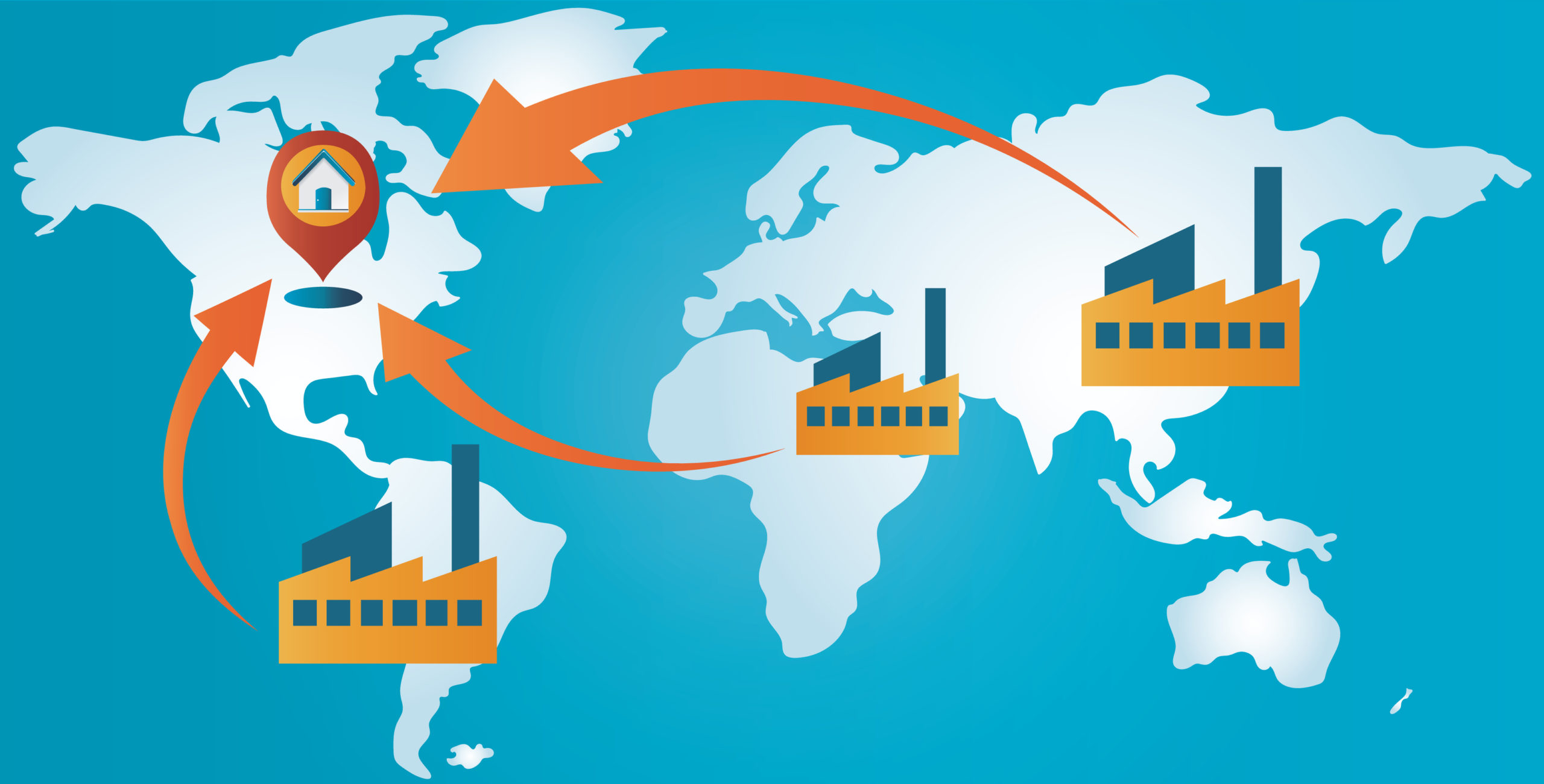Reshoring Efforts Are Underway But Will Take Time

Reshoring has been a buzzword in manufacturing circles since the height of the pandemic. After global disruptions derailed international supply chains, manufacturers saw the need to insulate themselves against continued turbulence. Reshoring emerged as a safeguard, and efforts are underway to bring supply chains back to the United States.
Now, two years later, glimmers of results from those efforts have begun to manifest. As the U.S. braces for economic turndown, ongoing reshoring efforts could become key in combating a potential recession.
Reshoring is beginning to take shape
When the pandemic shifted production back home out of necessity, many manufacturers took it as a call to action, to become more self-reliant. And while not every company has the depth to vertically integrate and consolidate supply chains in-house, many have kickstarted domestic or near-shore production as a means of controlling output in times of supply chain uncertainty.
According to a Bloomberg report on reshoring efforts, “The construction of new manufacturing facilities in the US has soared 116% over the past year.” Moreover, upwards of 90% of executives say they’re in the process of moving significant operations away from China or have plans to do so. This, on the heels of intensive lockdown protocols in mainland China that have caused persistent production setbacks in 2021 and 2022.

As manufacturers decouple from China and other countries, it’s less about geopolitical tensions than the need to safeguard operations. As succinctly summed up by one manufacturing executive, “this is just economics.” This sentiment is the driving force behind major reshoring efforts in several sectors, including semiconductor production.
Core drivers of reshoring efforts
The COVID-19 pandemic kick-started talk of reshoring, but there have been more than enough economic catalysts to keep efforts top of mind in 2021 and 2022:
- China’s quarantine policies and subsequent slowdowns have continued to hamper strategic supply chains out of Asia-Pacific (APAC) countries, including critical materials and fabricated products.
- A technology boom in the U.S. is enabling reshoring by lowering the cost of production operations for manufacturers willing to make long-term investments.
- Post-pandemic issues with globalized supply chains have producers seeking more control over supply and cost, which has led to nearshoring and, eventually, reshoring.
- Material scarcity and availability in global markets are pushing domestic producers to diversify supply chains closer to home.
With cost implications and production timelines dependent on supply chain efficiency, there’s no shortage of incentive for manufacturers to push for reshoring wherever possible. Where there once were cost barriers to bringing production back home, those costs now look manageable in the face of setbacks and inefficiencies caused by continued global disruptions.

Reshoring will take time to fully manifest
Two years removed from the height of the COVID-19 pandemic, we’re just now beginning to see the earliest manifestations of reshoring. It’s proof that the process is slow, and that manufacturers are cautiously adapting their operations to exercise strategic control over supply and production. Nevertheless, kicking the tires on reshoring efforts today is likely to have strategic benefits in the future.
Right now, manufacturing is bracing for a broad economic downturn in the United States. The manufacturers that commit to reshoring efforts through this downturn could find themselves part of a booming industrial renaissance at the tail end of the impending recession. Like all capital expenditure investments, reshoring is one that will take time to realize but will pay dividends far into the future.